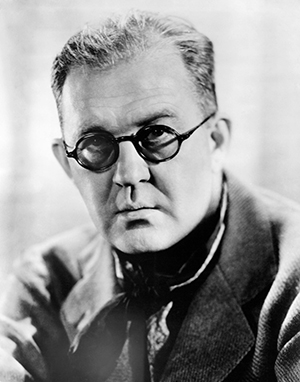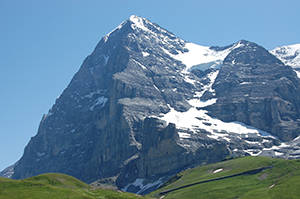August 11
Published in On this Day listing- 1971 John McKerr (49), a father of two, was shot dead in Ballymurphy, West Belfast, the last of eleven unarmed civilians with no paramilitary affiliations killed by the British Parachute Regiment in that area over a three-day period.
- 1919 Andrew Carnegie, Scottish-American industrialist, business magnate and philanthropist who donated c. $350 million to charities, foundations and universities over the last eighteen years of his life, died.
-
1969 Bulmer Hobson, leading member of the Irish Volunteers and IRB prior to the Easter Rising, died.
- 1973 John Ford (79), film director, died. Born John Martin Aloysius Feeney in Portland, Maine, the eleventh and last child of Irish-speaking emigrants from Spiddal, Co. Galway, Ford is considered one of the great Hollywood directors—he won four Academy Awards as best director—and was a master of filming landscapes, as illustrated in his many westerns, mainly shot in Monument Valley, Arizona. Like John Wayne, one of his principal actors, he liked to portray himself as a hard man, fond of liquor and gambling. On the one hand he was a quarrelsome, mean-tempered sort who bullied his actors. In his later years he wore dark glasses or an eye patch owing to his lifelong struggle with poor eyesight, a challenging disability in his profession. He was renowned for his refusal to discuss his work. On the other hand he was a cultured, well-read individual whose closest friends included Lord Killanin, who produced his Irish films. And his best movie? The Searchers (1956) would surely be on the list. On one level it was just another of his magnificent westerns; on another it mirrored the racial tensions and violence in the USA of the 1950s. Starring John Wayne, who proved that he could act, as Ethan Edwards, a vicious racist ex-Confederate on a quest to find his niece, Debbie (Natalie Wood), who has been abducted by Indians, it’s a story of murder, rape and, above all, the fear of miscegenation (interracial sexual relations). There are some great scenes, notably when Ethan eventually finds her. Surely he will kill her and damn himself forever? But no—he holds back, with the immortal words ‘Let’s go home, Debbie’.

Above: Film director John Ford, who died on 11 August 1973.
- 1861 Catherine Hayes (35), Limerick-born soprano known as ‘the swan of Erin’ and the first Irish-born opera diva to achieve international acclaim, died.
- 1858Charles Barrington from Bray, Co. Wicklow, led the first team to climb the Eiger. The craze for mountaineering in the Alps was pioneered by eccentric Englishmen. Young men of means on the Grand Tour or perhaps on their honeymoon would hire local guides and set off to ‘bag’ an unclaimed mountain—and, having reached the top, would open a bottle of champagne and toast the health of Queen Victoria. Then in 1857 the Alpine Club, the world’s first organised group of mountaineers, was founded. Its initial 281 members included 57 barristers, 34 clergymen, nineteen landed peers and fifteen dons. The first president was Dubliner John Ball, Liberal MP for Carlow. Barrington, then 24 years of age, was not a member and made just one visit to the Alps. Finding himself in the Swiss village of Grindlewald, it appears that he wagered on bagging an unclaimed mountain and chose the nearby Eiger (3,970m). With no previous mountaineering experience, he set out on the west face at 3am with two local guides and was on the summit by noon. Thereafter he returned to Ireland and never climbed seriously again: the nearest he ever came was to organise the first hill-running race up and down the Sugarloaf Mountain, after which he presented a gold watch, at his own expense, to the winner. Indeed, his main claim to fame was as owner, trainer and jockey of ‘Sir Robert Peel’, winner of the inaugural Irish Grand National at Fairyhouse in April 1870. Thanks to Mountaineering Ireland and others, his achievement in the Alps has been suitably marked in recent years with memorials in Grindlewald and in Bray.

Above: The west flank of the Eiger (in sunshine), first climbed by Irishman Charles Barrington in 1858. The infamous North Face is to the left, in the shade.
- 1932 Dr Thomas E. O’Higgins was elected president of the Army Comrades’ Association, later to be known as the Blueshirts. Membership was opened to the public and claimed to be 30,000.
'
















